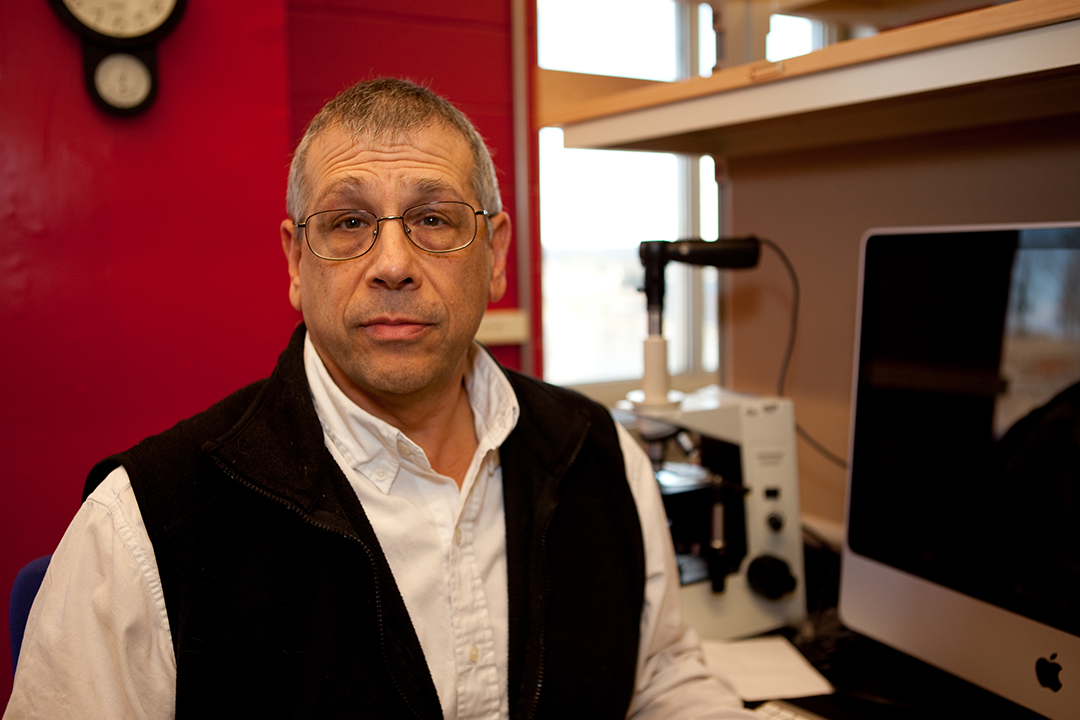No one will ever fault Professor of Chemistry Stuart Licht for a lack of investigative ambition. Having already developed revolutionary methods for making fertilizer and cement without emitting harmful carbon dioxide (CO2) into the atmosphere, he has now found a way to extract the greenhouse gas from the air and transform it into a valuable manufacturing material.
“We have taken on the challenge of a comprehensive solution to climate change,” Licht said. “We’re working towards changing today’s fossil fuel to a renewable chemical economy, replacing the largest greenhouse gas emitters with new, inexpensive, solar, CO2-free chemistries.”
Carbon dioxide is the most abundant greenhouse gas in the atmosphere, accounting for 82 percent of all U.S. emissions from human activities. It’s primarily released from the combustion of fossil fuels (coal, natural gas and oil) for energy and transportation. Despite dire warnings about the skyrocketing levels of atmospheric carbon dioxide and the role it plays in climate change, the world has been largely unsuccessful at reducing the amount of CO2 floating over our heads. And the scientific community has been thwarted in its attempts to bypass fossil fuels and generate the staples of society—iron, fuel, cement, fertilizer, building materials—without adding to the CO2 air-load.
But Licht’s breakthrough method has scientists dreaming of a global warming miracle. Dubbed STEP (solar thermal electrochemical pressure), the pioneering process uses sunlight, air and water to produce the now fossil fuel-created materials—and does so with little or no carbon footprint. Indeed, Licht, a Trachtenberg Scholar Award winner and holder of a Columbian College Dean’s Research Chair, said that rather than releasing CO2 into the air, he can actually extract it. With the prospect of a low-cost, low-energy method for generating commercial chemicals that also produces a measureable drop in atmospheric carbon dioxide, “this ambitious plan has global implications written in bold letters all over it,” said Chemistry Department Chair Michael King.
Out of Thin Air
Calling his approach “diamonds from the sky” (carbon is the material from which diamonds are made), Licht’s latest STEP efforts involve pulling highly-valued manufacturing material out of thin air. Working with a team of researchers, including postdoctoral fellow Jiawen Ren and graduate students Jason Lau, Matthew Jake Lefler and Jessica Stuart, his new technology economically converts atmospheric CO2 directly into in-demand carbon nanofibers, an expensive material used in a range of products from batteries and car components to airplane frames.
The method involves applying CO2—either extracted directly from the air or captured from industrial smokestacks—to a vat of hot molten salt, a liquid solution called carbonate. As the CO2 rapidly dissolves in the carbonate, Licht’s team places nickel and steel electrodes into the molten liquid. Applying just a few volts of electricity, the carbon nanofibers build up on the steel electrode, where they are easily removed.
The entire process, which is ignited by either a conventional power supply or a solar-energy system of Licht’s design, is both earth-friendly and economical. Licht estimated the energy input costs at $1,000 per ton of carbon nanofiber—an amount commercially valued at as much as $25,000. “We are at the beginning of an explosion in the market for carbon nanofiber uses,” he said. “It’s at the same place plastics were at beginning of World War II. By making [nanofiber production] inexpensive, the applications go far beyond airplane bodies. They could, for example, be used in building materials, and could one day replace steel.”
Licht has already scaled up the nanofiber experiments in his lab by 100-fold, and is confident that his process can erase enough of the greenhouse gas to significantly mitigate global warming.
“We calculate that with a physical area less than 10 percent the size of the Sahara Desert, our process could remove enough CO2 to decrease atmospheric levels to those of the pre-industrial revolution within 10 years,” Licht said. “There’s a necessity to work together, to test this on a larger scale, [and then] there’s no telling where we can go from here.”


